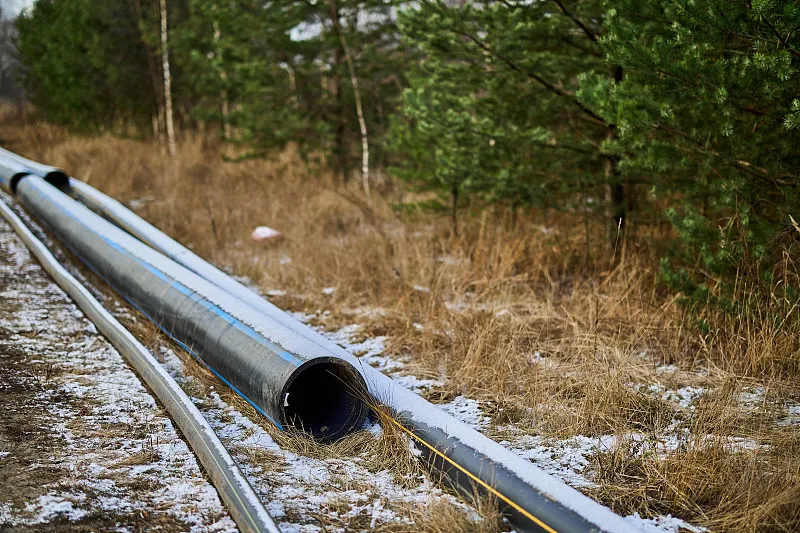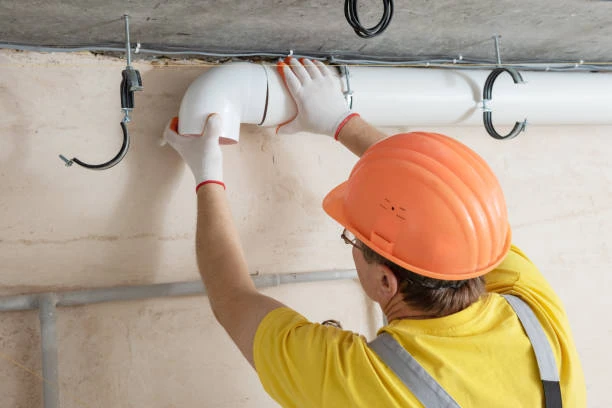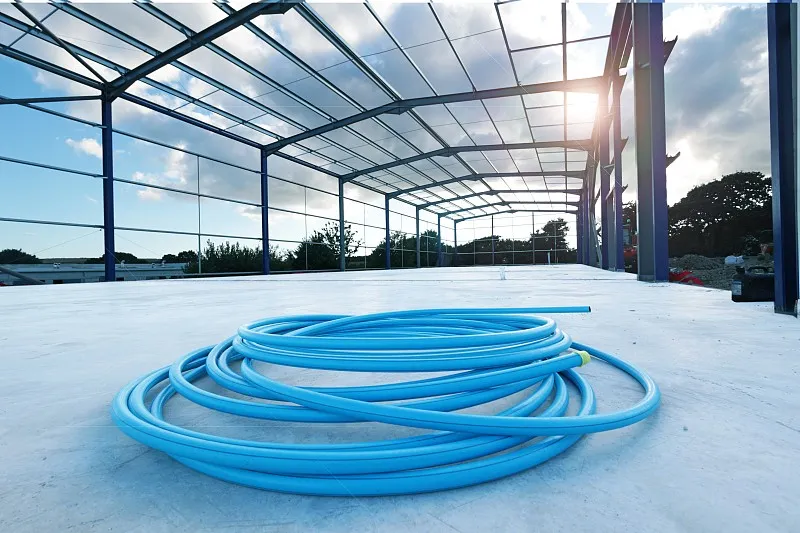Introduce PPR Pipe
PPR (Polypropylene Random Copolymer) pipes are widely recognized in the plumbing industry for their durability, resistance to corrosion, and versatility. However, the effectiveness of a PPR piping system significantly depends on the fittings used. This article will explore the various classifications of PPR Pipe fittings, detailing their types, applications, and essential considerations for proper installation and use.
Understanding PPR Pipe Fittings
What Are PPR Pipe Fittings?
PPR pipe fittings are components used to connect PPR pipes, facilitating changes in direction, diameter, and function in plumbing systems. These fittings are crucial in ensuring the integrity and efficiency of the piping system, preventing leaks, and accommodating various installation scenarios.
Importance of PPR Pipe Fittings
- Leak Prevention: Proper fittings ensure tight seals that minimize the risk of leaks.
- Flexibility: Various types of fittings allow for different configurations and applications.
- Durability: High-quality PPR fittings can withstand the same conditions as PPR pipes, ensuring a long service life.
Classifications of PPR Pipe Fittings
PPR pipe fittings can be classified based on several criteria, including their shape, purpose, and installation method. Below are the main classifications:
1. By Shape
a. Elbow Fittings
- Description: Elbow fittings are used to change the direction of the pipe. They come in various angles, with the most common being 90-degree and 45-degree elbows.
- Applications: Commonly used in plumbing systems to redirect flow, such as in corners or when changing pipe directions.
b. Tee Fittings
- Description: Tee fittings allow for branching off the main pipeline. They have one inlet and two outlets, forming a “T” shape.
- Applications: Used in systems where multiple branches are need, such as in irrigation or water distribution systems.
c. Reducer Fittings
- Description: Reducer fittings transition between different pipe diameters. They can be either concentric or eccentric, depending on the alignment.
- Applications: Useful in situations where flow needs to be reduced or adapted, such as connecting a larger pipe to a smaller one.
d. Cap Fittings
- Description: Cap fittings are use to seal the end of a pipe, effectively stopping flow.
- Applications: Commonly employed in plumbing systems to close off unused pipe ends.
e. Union Fittings
- Description: Union fittings are designe to allow for easy disconnection of pipe segments without cutting the pipe.
- Applications: Ideal for situations where frequent maintenance or replacements are required.
2. By Function
a. Socket Fittings
- Description: Socket fittings are designe to fit over the end of a pipe. They are commonly used for joining straight sections of pipe.
- Applications: Suitable for creating continuous runs of piping.
b. Threaded Fittings
- Description: These fittings feature external or internal threads that allow for easy connection with threaded pipes or other fittings.
- Applications: Often used in applications where disassembly is required, such as in plumbing repairs.
c. Flange Fittings
- Description: Flange fittings are use to connect two sections of piping or connect pipes to equipment. They consist of a flat piece with holes for bolts.
- Applications: Common in industrial settings where large diameter pipes are used.
3. By Installation Method
a. Welding Fittings
- Description: These fittings require a heat source to fuse the fitting to the pipe. This creates a permanent bond.
- Applications: Widely used in situations requiring a high level of leak-proof integrity, such as in hot water systems.
b. Mechanical Fittings
- Description: Mechanical fittings use screws or clamps to hold the fitting in place, allowing for easier installation and disassembly.
- Applications: Useful in temporary setups or where maintenance is frequent.
Material Considerations for PPR Pipe Fittings
Properties of PPR Material
PPR fittings are made from the same polypropylene material as PPR pipes, which offers several advantages:
- Corrosion Resistance: PPR does not corrode, making it suitable for various environments.
- Chemical Resistance: PPR fittings resist a wide range of chemicals, which is beneficial in industrial applications.
- Temperature Tolerance: PPR can handle temperatures from -20°C to 95°C, making it suitable for both hot and cold water systems.
Quality Standards
When selecting PPR pipe fittings, it’s essential to consider quality standards, which can impact performance and longevity:
- Certification: Look for fittings certified by relevant standards organizations, ensuring they meet industry requirements.
- Manufacturer Reputation: Choose fittings from reputable manufacturers known for quality and reliability.

Installation Best Practices for PPR Pipe Fittings
Proper installation is crucial for the performance and longevity of PPR pipe fittings. Here are some best practices:
1. Preparation
- Clean the Pipe Ends: Ensure the ends of the pipes are clean and free from dirt or debris before fitting.
- Inspect for Damage: Check both the fittings and pipes for any signs of damage that could affect performance.
2. Heating for Welded Fittings
- Use the Right Temperature: When using welding methods, ensure the heat source is set to the correct temperature for PPR.
- Even Heating: Heat both the fitting and the pipe evenly to ensure a solid bond.
3. Proper Alignment
- Ensure Straight Connections: When joining pipes and fittings, ensure they are aligne straight to prevent stress and potential leaks.
- Hold in Place: For welded fittings, hold the connection in place until it cools to ensure a secure bond.
4. Pressure Testing
- Test for Leaks: After installation, conduct a pressure test to check for leaks. This helps identify any issues before the system is put into operation.
Troubleshooting Common Issues with PPR Pipe Fittings
Even with proper installation, issues may arise. Here’s how to troubleshoot common problems:
1. Leaks at Connections
- Possible Causes: Leaks may occur due to improper installation, damaged fittings, or excessive pressure.
- Solutions: Check the fitting alignment, tighten connections, and replace any damaged fittings as needed.
2. Fittings Cracking or Breaking
- Possible Causes: Cracking can result from exposure to high temperatures, pressure fluctuations, or improper handling.
- Solutions: Replace cracked fittings and consider reinforcing them with additional support if necessary.
3. Difficulty in Disassembly
- Possible Causes: Over-tightening or using permanent fittings can make disassembly challenging.
- Solutions: For mechanical fittings, avoid over-tightening and use lubricant on threads to ease disassembly.
Conclusion PPR Pipe
Understanding the classifications of PPR pipe fittings is essential for effective plumbing installation and maintenance. With various options available based on shape, function, and installation method, selecting the right fitting is crucial for ensuring a leak-free and durable piping system. By adhering to best practices and troubleshooting common issues, you can enhance the longevity and efficiency of your PPR piping system.
FAQs
1. What types of PPR pipe fittings are most commonly used?
The most commonly used PPR pipe fittings include elbows, tees, reducers, caps, and unions.
2. Can PPR fittings be used with other types of pipes?
PPR fittings are primarily designe for use with PPR pipes, but adapters can be use to connect to other pipe materials.
3. How do I determine the correct size fitting for my PPR pipes?
Select fittings that match the diameter of your PPR pipes. Ensure the fittings are rate for the same pressure and temperature conditions.
4. Are PPR fittings resistant to chemical damage?
Yes, PPR fittings offer good resistance to a wide range of chemicals, but it’s essential to check compatibility with specific substances.
5. What should I do if I encounter a leak in a PPR fitting?
First, shut off the water supply, then inspect the fitting for damage. Tighten any loose connections, and replace the fitting if necessary.


















